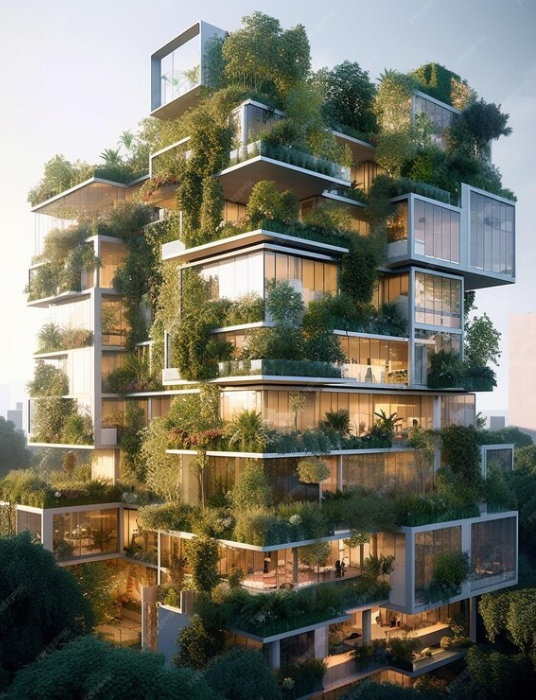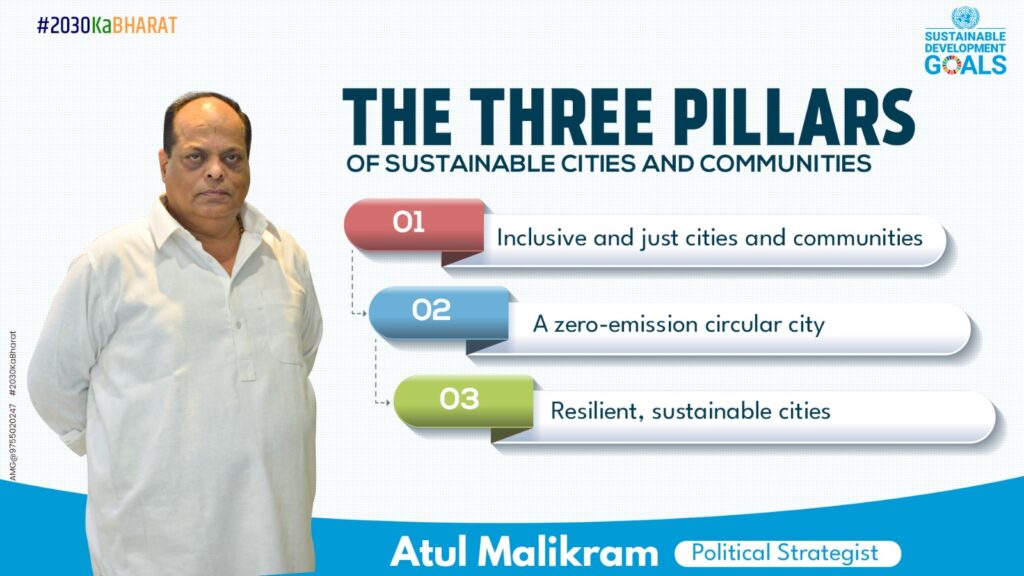“The crisis of the overgrown city is the other side of the crisis of the natural world,” writes Italo Calvino in Invisible Cities. Truer words were never spoken, urging us to treat urban spaces differently. This article delves into the concept of sustainable cities, the challenges faced by modern cities, and the transformative measures needed to build sustainable cities and communities.
What is a Sustainable City?
A sustainable city is more than just a collection of buildings; it is a living space designed to protect the environment, uphold social justice, and foster inclusive economic development. Urban spaces,
“The sustainable city is a living space built to protect the environment, defend social justice and promote inclusive economic development”
until now, have often contributed to environmental degradation. However, they possess the potential to address pressing global issues such as climate change, pollution, and inequality.
Present Challenges Faced by Cities
Cities are currently grappling with significant environmental issues, with air quality ranking as the most substantial risk to health. Despite covering only 2% of the Earth’s surface, cities are responsible for around 70% of total human-generated emissions.
“Although cities only cover 2% of the Earth, they are responsible for around 70% of global emissions”

This has dire consequences, contributing to 6 to 7 million premature deaths annually. Biodiversity loss is another challenge, impacting human quality of life, affecting agriculture, and increasing food insecurity. Additionally, the construction of resilient infrastructure is essential to combat the forecasted increase in urban flooding and rising sea levels due to climate change.
For instance, when the population of pollinating insect species, such as bees, dwindles, it results in a decline in agricultural productivity, thereby exacerbating food insecurity. Similarly, the abundant presence of trees and vegetation in urban areas plays a crucial role in significantly reducing pollution levels.
Addressing another significant challenge involves the development of resilient infrastructure and buildings, essential for mitigating the impacts of climate change. Projections indicate a 40% increase in the risk of flooding in coastal urban areas by 2030. Furthermore, by the close of the century, rising sea levels— even in a low-emission scenario—pose a threat to the well-being of 200 million individuals residing in regions below current water levels.
How Do We Build Sustainable Cities and Communities?
To address these challenges, sustainable cities and communities must catalyze transformation across various aspects of society. The Global Environmental Outlook for Cities outlines key measures for achieving this transformation.
A Zero-Emission Circular City
To significantly reduce emissions, sustainable cities must transition to a circular economy. This involves the reuse and recycling of waste, maximizing renewable energies, and implementing high energy efficiency in buildings. Incorporating green walls, roofs, solar panels, and wind farms on the outskirts can contribute to sustainability and create jobs.
- Reuse and Recycling: Transform waste into new materials.
- Renewable Energies: Maximize the use of renewable energy sources.
- Energy-Efficient Buildings: Design buildings with high energy efficiency and heat insulation criteria, featuring green walls and roofs.
- Solar Panels and Wind Farms: Install solar panels on rooftops and construct wind farms on the outskirts for renewable energy and sustainable job creation.
Resilient, Sustainable Cities
As climate change becomes a reality, cities must adapt by constructing resilient infrastructure and spaces. Recommendations include protecting natural habitats on the city’s outskirts, promoting public transport and electric vehicles, creating quality transport networks, and developing local plans for climate adaptation and disaster recovery.
- Protection of Natural Habitats: Safeguard farmland, woods, and wildlife habitats on the edge of the city.
- Promotion of Public Transport: Encourage the use of public transport and electric vehicles.
- Quality Transport Networks: Establish quality transport networks linking workplaces with residential districts, civic spaces, health centers, schools, and shopping areas.
- Non-Motorized Mobility: Promote non-motorized mobility through expanded pedestrianized streets and cycle lanes.
- Climate Adaptation Plans: Introduce local plans for climate adaptation and recovery from natural disasters.
- Inclusive Assistance Programs: Implement specific assistance programs to support social groups and marginalized communities.
Inclusive and Just Cities and Communities

Inclusivity is paramount for the success of sustainable cities. Planning should consider the diversity of populations and make cities accessible for people with disabilities. Fair distribution of climate investments is crucial to address the disproportionate impacts on vulnerable communities. Protecting spaces with high biodiversity and prioritizing efficient land use can further contribute to sustainable development.
- Inclusive Urban Development: Plan cities and land use while considering the diversity of populations and ensuring accessibility for people with disabilities.
- Fair Distribution of Climate Investments: Ensure fair distribution of climate investments to address global climate change impacts, with a focus on vulnerable communities.
- Positive Nature Strategies: Protect spaces with high biodiversity from urban expansion and prioritize efficient use of metropolitan land.
In the words of Italo Calvino
“The city… does not tell its past, but contains it like the lines of a hand.” While the city itself cannot speak of its past, its citizens have the power to shape its future. Building sustainable cities and communities is not just a goal; it is a necessity for a greener, fairer, and more inclusive world. As we navigate the challenges of the present, it is imperative to prioritize environmental sustainability, social justice, and economic inclusivity in our urban planning and development.
Through the implementation of the recommendations outlined in the Global Environmental Outlook for Cities, we can pave the way for a future where cities are not just hubs of activity but thriving examples of harmonious coexistence between humanity and the environment. It is time to reimagine, redesign, and rebuild our cities to ensure a sustainable tomorrow for generations to come.

